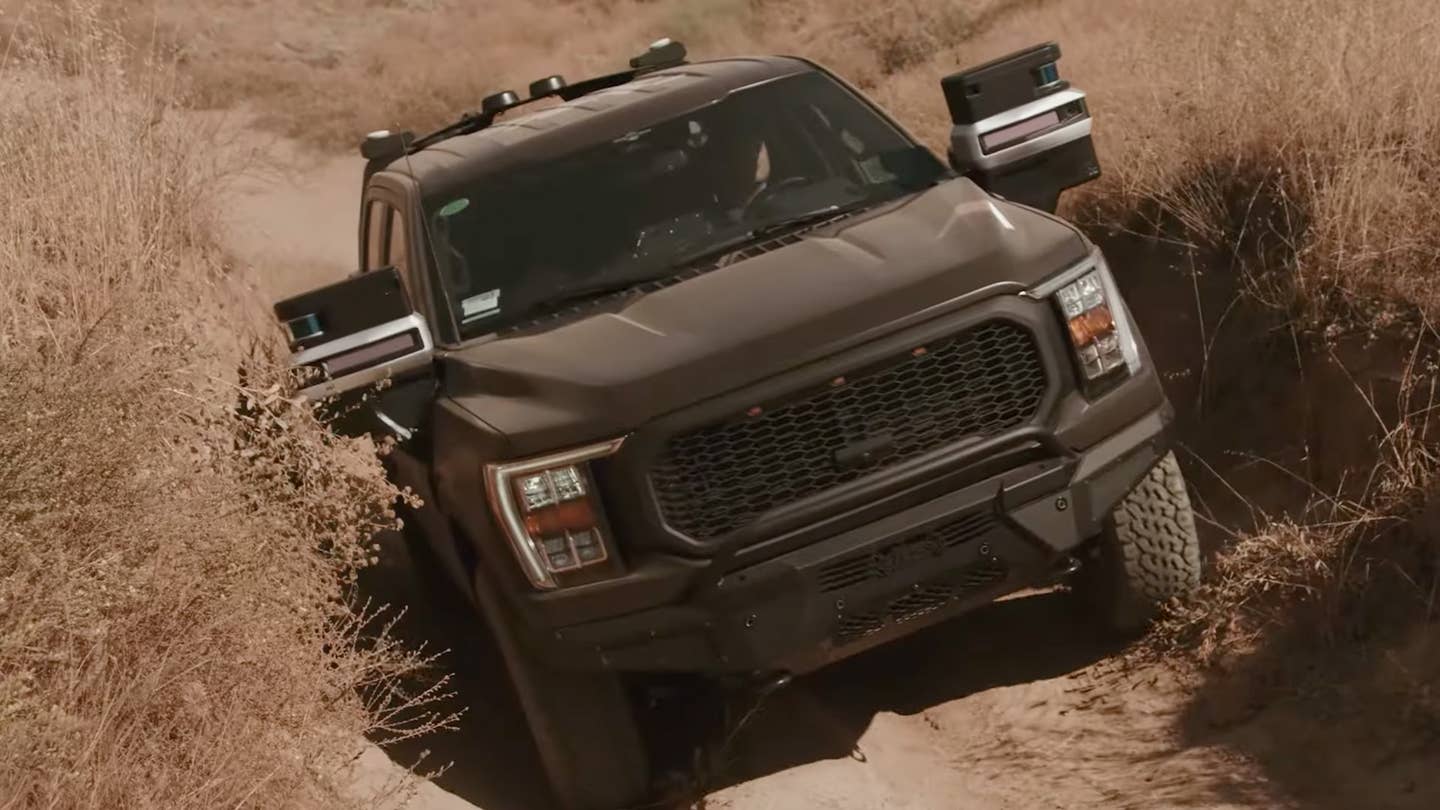No, those aren’t the mirrors—they’re called DefensePods and they have built-in LiDAR, radar, and cameras.

Forget all the robotaxi drama for a minute and let’s geek out over Kodiak Robotics’ autonomous Ford F-150. It’s a special prototype built for the United States Department of Defense to test driverless vehicles in treacherous situations. If it works out, this tech could enable the Army to perform reconnaissance missions and ground surveillance on tricky terrain without endangering soldiers. In other words: You’ll never hail one of these after a night on the town, and that’s only part of what makes this a more interesting use of automated driving gadgetry.
Kodiak won a $50-million bid to supply the U.S. Department of Defense with two of these vehicles meant to thrive where other AVs struggle. This black-on-black pickup is especially capable in areas with “degraded GPS,” which gives it a crucial advantage over machines that rely completely on pre-mapped routes or remote operators. Kodiak’s own defense-specialized SensorPods make this possible with a combination of LiDAR, radar, and cameras that read the surroundings in real-time. The equipment is also deployed on Kodiak’s autonomous Class 8 vehicle prototypes.
Ram drivers wish they had tow mirrors that look like this.
I’ll come right out and say that I’m a truck guy, not a self-driving or military expert. Still, there are some key observations we can make on our own here. The robotics firm didn’t reveal many specifics about the truck, but I see it’s riding on BF Goodrich KO2 tires, just like an F-150 Raptor. Why wouldn’t Kodiak go with a Raptor in the first place? My guess is the team there, along with the DoD, values simplicity over complex off-road equipment like the fancier truck’s Fox Live Valve suspension. It makes more sense to take a regular F-150, presumably with the proven 5.0-liter V8, and modify it with a few relevant upgrades. It’s the same reason the military uses emissions-absent diesel trucks; reliability takes priority.
Plus, every good off-roader deserves a steel front bumper.
The Kodiak Defender, as it’s called, was apparently developed in just six months. The modular, “vehicle-agnostic” autonomous system made that possible; if Kodiak had to develop something new from the ground up, it would have taken way longer. Time is always of the essence when it comes to operations like these, though rapid development often leads to sub-par products. Kodiak promises that isn’t the case here.
The feds have been testing these F-150s on a U.S. military base since November. I’m not sure how much we’ll hear about their findings but either way, this video below shows real prototypes doing real work.
Got a tip or question for the author? Contact them directly: caleb@thedrive.com



